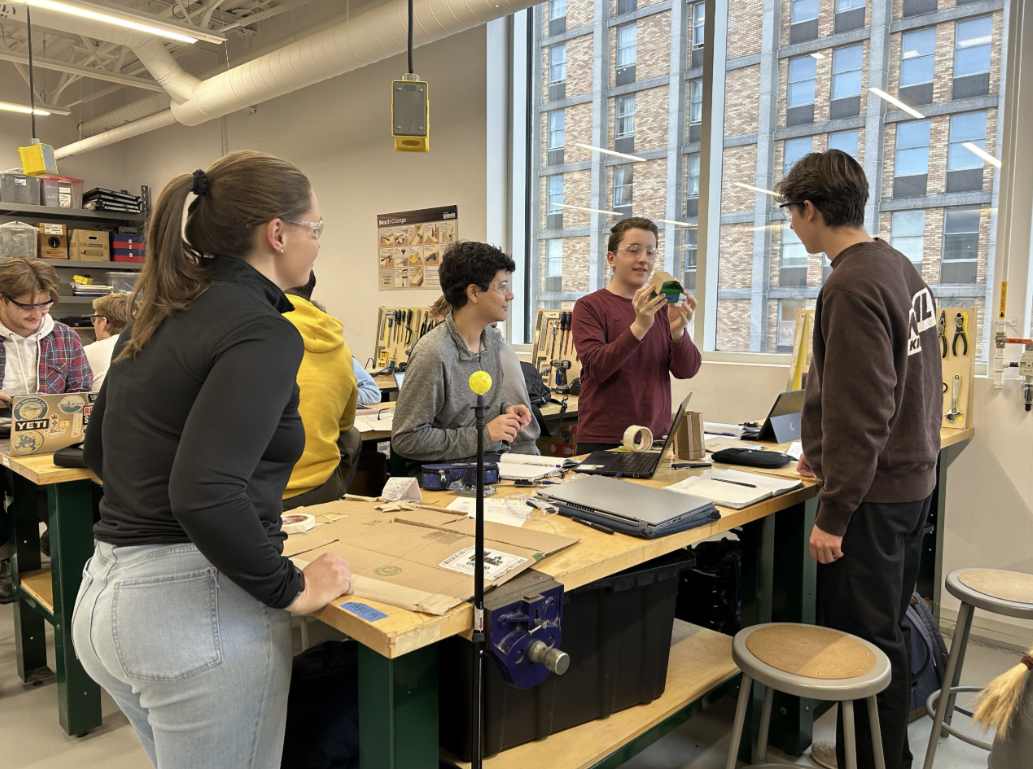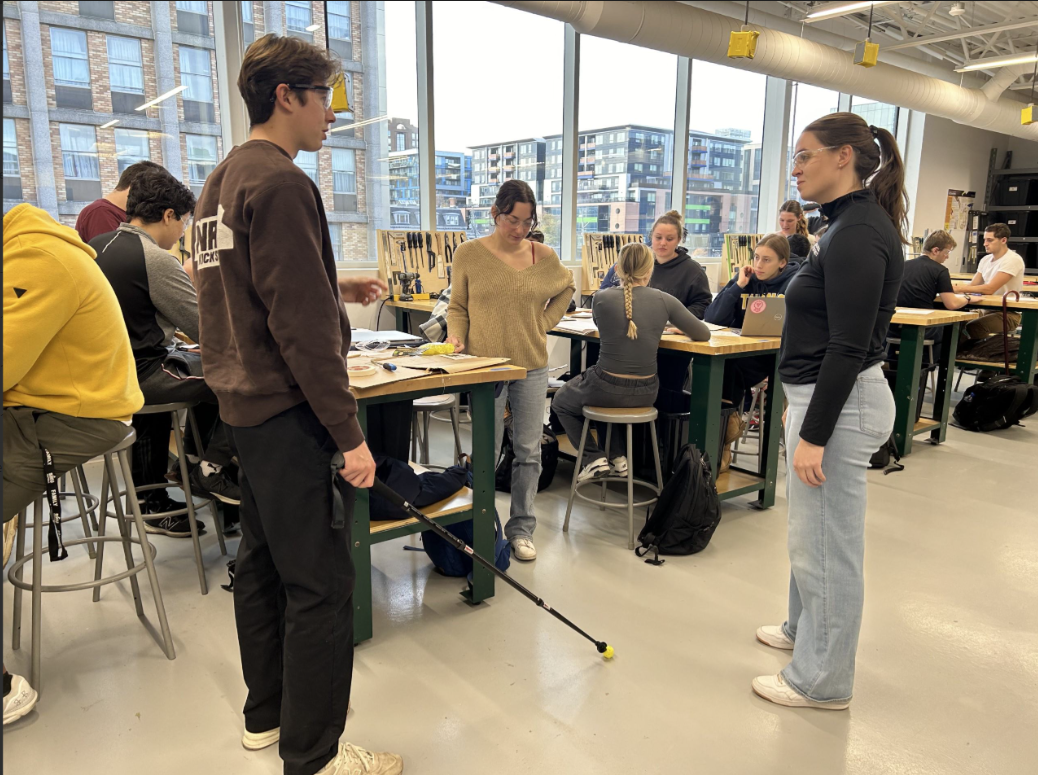News
» Go to news mainA New Chapter in Design Engineering

Isobel DeMont is one of the first people youâll meet when you begin your degree at Dalhousie Engineering.
The dynamic Dal PhD candidate joined the Faculty this year as the new instructor for the first year Design 1 course â a foundational class where students tackle real-world challenges through hands-on design and collaboration. But the course isnât just an introduction to engineering, itâs a full immersion into the engineering mindset.
âDesign 1 is one of the only opportunities for first year students to âdo engineeringâ as most of their other classes are math- and science-based,â explains DeMont. âIn class, students learn about the general process of engineering design, how to approach design from different perspectives, when to iterate, and helpful tools and strategies that facilitate the entire process.â
Recognizing that many of her first-year students have had limited exposure to engineering, DeMont structures her class to be highly interactive and engaging. She incorporates plenty of activities and discussions that allow students to see the practical applications of the concepts theyâre learning.
âThe labs are where the deeper learning happens,â shares DeMont. âStudents complete two design projects over the course of the semester, both starting from defining a problem to be solved and working all the way through to producing a prototype and communicating their final design with technical reports.â
To make the experience more meaningful, the design projects are based on real-world problems from real clients. Students review client interview transcripts, identify key issues and define a problem they believe needs solving.
âAll stages of the design process require the students to research technical aspects of their ideas, but also cultural and societal, health and safety, environmental, and economic considerations as well. Knowledge on these additional factors make for a much more rounded engineer.â
While DeMont enjoys working collaboratively with the students to find solutions, for her,
the satisfaction of engaging with them goes far beyond just introducing them to engineering.
Building a Supportive and Engaging Classroom

âBeyond that, I hope to show the students that I am looking out for them in the first year,â she shares. âThe Faculty has many excellent advisors who are all extremely helpful, but they arenât necessarily facing the students every day. I hope to be the familiar face that students feel they can approach if they need advice, to voice concerns, and offer feedback! I want them to feel as though someone will always be there to help if needed.â
DeMontâs approach to teaching is influenced by her own experiences as student.
I did not go to Dalhousie for my undergraduate degree, however, after my undergraduate program, I had two main feelings,â she shares. Â âI had a lot of technical knowledge but didnât know how to apply it, and I didnât feel a sense of belonging in my program. Overall, I did enjoy my studies, but I noticed these shortcomings and knew as soon as I started this position that I didnât want any of my students to feel either of these things.â
To address these challenges, DeMont prioritizes her studentsâ well-being. She recognizes that building personal connections in large classes can be difficult, but she makes an effort to engage, particularly in lab sessions where she can interact with smaller groups.
âIn these labs, I provide detailed feedback on their approach to the engineering design process, showing my commitment to their growth as engineers. I want them to know I'm here to support them in progressing through their projects, their degrees, and eventually, their careers.â
Her goal is to inspire students by showcasing how rewarding and impactful a career in engineering can be. She shares examples of real-world changes engineers have made, showing students how their own work could positively impact society. Through these examples, Â she teaches them how to approach and navigate complex engineering problems.
âUndergraduate students (myself included back in the day) are often focused on getting a good GPA, so finding the âright answerâ becomes paramount,â she says. âBut, design doesnât have a right answer, it has many.â
Engineering problems, she adds, are often complex, and require simplifications, assumptions, and estimations. DeMont says students need to learn how to translate textbook knowledge into solutions for the real-world challenges theyâll face.
âI believe in learning by doing, so having them complete a design project in the first year that will have a lot of unknowns and incomplete information, throws them right into the deep end (with my help, of course).â
And while part of her teaching approach involves showing students how to succeed, she also wants them to understand how to handle failure.
 âFailure is inevitable in life; it will happen eventually. I was a good student throughout high school and university, but still failed my fair share of tests. I once got a 12% on a midterm that I studied very hard for. It happens to everyone, and it is normal.â
âFailure is inevitable in life; it will happen eventually. I was a good student throughout high school and university, but still failed my fair share of tests. I once got a 12% on a midterm that I studied very hard for. It happens to everyone, and it is normal.â
Whatâs important she says, is how you react to that failure, and for those struggling, DeMontâs door is always open.
Recent News
- Engineering Young Alumni Reception
- Students scale new heights with Toronto tower pitch
- Dalhousie Students Develop Automation Tool for Irving Shipbuilding
- 2025 Capstone Poster Expo
- Dalhousie Engineering Students Lead the 2025 Canadian Engineering Competition
- âA painless flash of lightâ: Biomedical Engineering student wins 3 Minute Thesis
- Sparking a Passion for Indigenous Engagement in Engineering
- 2025 Engineering Student Experience Showcase
